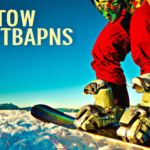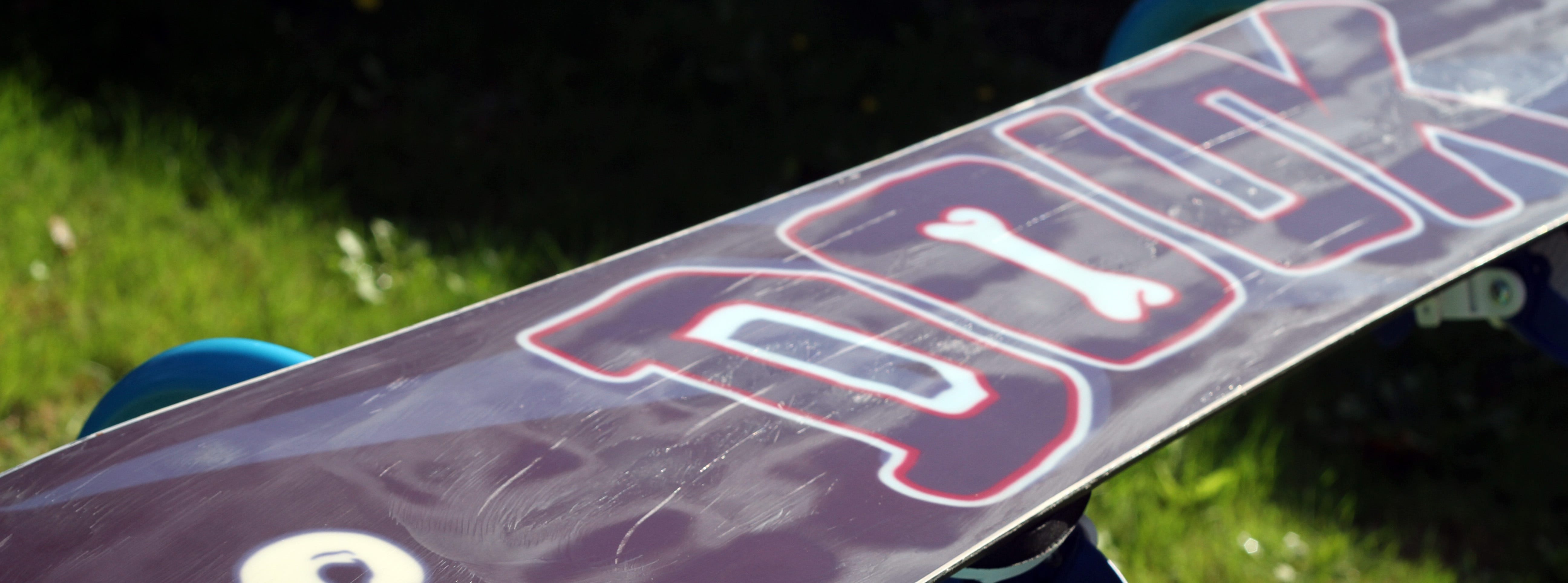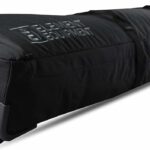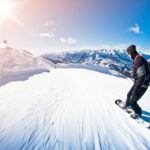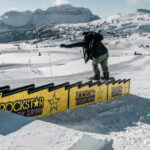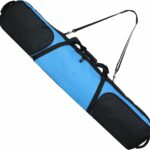Imagine you’re standing on a snowy mountaintop, bracing yourself against the chilly winds. You’ve got your brand new snowboard sitting next to you, ready for action. But there’s just one problem – you still need to assemble it. Don’t worry, you’re not alone. Many others share your predicament and that’s precisely why this article exists. “How To Assemble A Snowboard?” is crafted to guide you, step-by-step, through the process of creating your perfect ride. By the end of it, you’ll be equipped with all necessary skills to assemble your board, all by yourself. The excitement of sliding down that slope is just a few steps away. So, are you ready to begin your snowboarding adventure?
Understanding Snowboard Components
Before assembling your snowboard, it’s crucial to understand its various components. Knowing the anatomy of your snowboard will give you a better understanding of how your snowboard works and can help when diagnosing any potential problems.
Types of Snowboards
There are various types of snowboards, each designed for different styles of riding. You have freestyle snowboards which are typically lightweight and maneuverable, ideal for tricks and jumps. All-mountain snowboards are versatile and suitable for both groomed runs and off-piste. Freeride snowboards are designed for backcountry and deep snow while powder snowboards are for deep snow conditions. Finally, alpine or carving snowboards are designed for carving turns on hard snow.
Snowboard Sizes
The size of your snowboard is determined by your weight, height, and the type of riding you’ll be doing. In general, a traditional snowboard should reach somewhere between your chin and nose when stood upright. However, the trend is increasingly towards shorter, more maneuverable boards.
Snowboard Components
Your snowboard consists of several components: The deck – the top of the snowboard where you stand, the base – which makes contact with the snow, the edges – which you use to carve into the snow, and the bindings – which secure your feet to the board.
Understanding Snowboard Bindings
Bindings are one of the most critical components of a snowboard. They secure your boots to the deck, allowing you to control the board. There are different types of bindings, including strap-in, step-in, and hybrid bindings, each with its own set of advantages and disadvantages.
Gathering the Necessary Tools
Preparing yourself with the necessary tools can ensure an easier and safer assembly of your snowboard.
Basic Tools Needed
To assemble a snowboard, you’ll need a few basic tools including a screwdriver or an Allen wrench depending on the screws your bindings use, and a snowboard tuning kit.
Optional Tools That Might be Useful
Additional tools such as a snowboard waxing iron, wax and scraper might also be useful if you want to wax your board for optimum performance. A good snowboard carrier might also be handy for protection and easy transportation.
Preparing Your Snowboard
Once you have all your equipment and tools ready, it’s time to prepare the snowboard for assembly.
Cleaning the Snowboard
Begin with a dry, clean board. Dirt and moisture can interfere with the mounting of your bindings, and it’s a good idea to clean the base of your board regularly to keep it in top condition.
Determining the Stance Direction
This is whether you will be riding left foot forward (regular) or right foot forward (goofy). If you’re unsure, think about which foot you would naturally put forward if you were to slide on an icy surface.
Establishing the Stance Width
The stance width is the distance between your bindings. A good starting point is the width of your shoulders, but this can be adjusted based on comfort and the type of riding you will be doing.
Setting up Your Bindings
With your board prepared, it’s time to set up your bindings.
Types of Snowboard Bindings
The three main types of snowboard bindings are strap-in, step-in, and hybrid. Strap-in bindings are the most common, offering the most control. They use straps to hold your boots in place. Step-in bindings allow you to simply step into them, similar to ski bindings. Hybrid bindings are a combination of step-in and strap-in bindings.
Choosing the Appropriate Bindings
When choosing bindings, consider your style of riding, skill level, and the type of board you’re using. Make sure they’re compatible with your snowboard and boots.
Fitting the Bindings
The bindings should fit your boots snugly without any overhang. They should also align with your snowboard’s mounting holes.
Attaching the Bindings
Next, you’ll secure the bindings to the snowboard.
Positioning the Bindings
Position the bindings based on the stance you determined earlier. Most snowboards will have a recommended stance marked on the board.
Securely Fastening the Bindings
Now you’ll screw the bindings onto the board. Start by loosely securing each screw, then go back and tighten each one.
Checking the Bindings for Security
Once fastened, give your bindings a check to make sure they are securely attached.
Mounting the Snowboard Boots
After you’ve attached the bindings, you’re ready to mount your boots.
Choosing the Right Boots
Choose boots that are the right size for you and are comfortable. They should fit snugly without causing pain, and they should be compatible with your bindings.
Fitting the Boots in the Bindings
To slip your boots into your bindings, unbuckle or unstrap your bindings, slide your boot in, then secure the bindings.
Checking the Boots for Security
Ensure your boots are secure in the bindings. Your boots should feel snug without any wiggle room.
Finalizing the Setup
With your boots mounted, it’s time to finalize the setup.
Adjusting the Bindings Angle
You can adjust the angle of your bindings to match your riding style. If you plan on riding in both directions equally, set both to a similar angle.
Securing the Boots
Next, secure your boots by strapping or buckling them into your bindings.
Performing a Final Check
Before hitting the slopes, perform a final check. Make sure all screws are tight, and the bindings are secured safely.
Understanding Snowboard Maintenance
Maintaining your snowboard is crucial for longevity and optimal performance.
Regular Snowboard Cleaning
Regularly cleaning your snowboard, including the base and the topsheet, helps remove dirt and grime, making it last longer.
Checking for Damage After Use
After each snowboarding session, check for any damage. Look out for scratches, cracks, and ensure the bindings remain secure.
Proper Snowboard Storage
Store your snowboard in a dry, room-temperature area. Do not lean it against a wall as it might warp the board.
Troubleshooting Common Assembly Problems
Like any sporting equipment, you may face some common assembly issues with snowboards.
Struggles with Securing Bindings
If you’re struggling to secure the bindings, ensure the holes line up correctly. If they don’t, check if you have the right bindings for your board.
Loose Boots
Boots that are too loose in the bindings can make your board hard to control. If your boots are loose, consider tightening the bindings. If that doesn’t work, you may need a smaller size.
Mismatching Components
Mismatching components can cause serious problems. Make sure you have compatible boots, bindings, and a snowboard.
Safety Precautions When Assembling a Snowboard
Safety is paramount when assembling a snowboard.
Use of Appropriate Tools
Always use appropriate tools for assembling to avoid damaging your board or bindings, or potentially causing yourself injury.
Avoid Forcing Components Together
Do not force components together. If pieces aren’t fitting together smoothly, there’s likely a compatibility issue.
Secure All Mounting Hardware Correctly
Ensuring all hardware is correctly secured will not only keep your snowboard performing well, but will also keep you safe as you ride.
Assembling a snowboard is not a complicated process, but it’s essential to do it correctly for your safety and to ensure the best performance from your equipment. By understanding and caring for your snowboard and its components, you’ll be able to enjoy many seasons on the slopes.
- What Snowboard Bindings Should I Get? - January 23, 2024
- What Size Screws For Snowboard Bindings? - January 23, 2024
- How To Snowmobile On Water? - January 23, 2024



